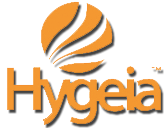
Breastfeeding: it’s the way anyone can level up to supermom status, right?
While it is an amazing journey, it is completely normal to hit a few bumps in the road. The good news is no mom needs to be alone in their journey! There is a ton of support available to help moms navigate this new chapter of motherhood and empower them to thrive with breastfeeding.
In this blog post, in the spirit of World Breastfeeding Week, we will discuss the best people and places to find breastfeeding support.
Healthcare Providers
Your doctor or midwife is a great place to start for support. They may not be the experts themselves, but they can likely provide you with initial information, point you in a good direction for resources, and even refer you to lactation consultants. Remember, they deal with moms who are new to breastfeeding on a regular basis.
Lactation Consultants
Lactation consultants are specially trained professionals who can help with breastfeeding questions, problems, and general support. They are wonderful assets for assisting with latching, milk supply, and other common issues. Today, most hospitals have a lactation consultant on staff. If one does not visit you upon delivery, don’t miss out. Request that the on-staff lactation consultant visit before your stay is over.
Support Groups
A mom tends to feel less alone about her struggles when she’s able to share her experiences with others who are going through or have been through similar challenges..Support groups can be a great way to connect with other breastfeeding moms and get the encouragement needed. This can also be a great way to receive tips from moms who’ve had to tackle the same issues. La Leche League offers support groups across the country or check with your hospital, as many offer support groups. If yours does not, the lactation consultant may be aware of a local group.
Partners and Family
Your partner and family can, and hopefully will, play an important role in your breastfeeding journey. They can provide emotional support, help with household chores, and take care of older children if needed. Of course, not every mom has this kind of support at home. In this case, sometimes friend circles can become like family and set up meal trains and regular check-ins to be sure a mom has the support she needs.
Online Resources & Hygeia Health
The beauty of today’s world is that not everything has to be within driving distance to be accessible. There are many online resources available, including websites, blogs, forums, and even support groups. However, the plethora of options available can be both a blessing and a curse. An already overwhelmed mom struggling in her breastfeeding journey likely doesn’t have the fortitude to sift through endless search results. Fortunately, there are trustworthy sources for information, support, and community, such as La Leche League, Academy of Breastfeeding Medicine (ABM), Healthline and The World Health Organization (WHO).
Hygeia Health
We at Hygeia Health are on the top of the list as well! We’re here to support you in all ways. Our website offers information and resources on breastfeeding and our customer service team is available to answer your questions. We also partner with Nest Collaborative to provide virtual breastfeeding consults accessible anytime, anywhere, covered by most insurance plans at no cost to you.
Remember, you’re not alone. There are many people and resources available to help you on your breastfeeding journey. Don’t be afraid to ask for help.

Breastfeeding is a beautiful journey, but it’s not always easy. Many mothers face significant obstacles that can make breastfeeding challenging to sustain. This World Breastfeeding Week, we want to shed light on these struggles and obstacles and offer support. This blog post will dive into those challenges.
Physical Challenges
Sore nipples, engorgement, and mastitis–ever heard of those? These are some of the most common physical hurdles moms face. These can be incredibly painful and downright discouraging for a mom. No matter how much she understands the benefits of breastfeeding, the pain can cause a mom to want to give up or feel incapable. Lack of sleep in the early days and weeks after birth, coupled with the demands of a newborn, can further exacerbate these issues.
One of the major causes for physical challenges, though, is inadequate latching, which is often a result of a mom not being well supported after birth. This can be particularly true for a first time breastfeeding mom who doesn’t receive support from a lactation consultant. When breastfeeding support is lacking from the start, a mom can be quickly deterred.
Psychological Challenges
While the previously mentioned painful experiences of things like cracked and bleeding nipples may sound traumatic, physical challenges are often treated and managed more easily than the mental issues moms can face.
Feeling inadequate, stressed, or isolated is not an uncommon experience for breastfeeding mothers. The pressure to succeed can be overwhelming, especially when coupled with the mantra that “breastfeeding is natural”. The physical struggles coupled with the flood of hormones that follow delivery can result in postpartum depression and anxiety, which can further complicate the early breastfeeding journey.
Additionally, some moms struggle with body image concerns. Bodies obviously change through pregnancy, and, typically, they don’t simply “bounce back” to their pre-pregnancy shape, weight, and size. Living in a ‘new’ body can also lead to mental challenges for moms.
Societal and Environmental Challenges
Lack of workplace support is a major barrier for many mothers in their breastfeeding journey. Limited maternity leave, lack of lactation rooms, and negative attitudes towards breastfeeding can make it difficult for working moms to continue breastfeeding once returning to work.
Additionally, access to quality healthcare and lactation support is also crucial to breastfeeding success, and unfortunately, in many corners of the world ( even in the United States), not every mom has both or either of these things.
Other socioeconomic disparities can impact a mother’s ability to access these resources, such as income, education, geographic location, and racial/ethnic disparities. Discrimination can play a role for some, as can living in a rural or low income area.
Knowledge and Information Gaps
Misinformation about breastfeeding is prevalent. Many mothers lack the knowledge and support they need to overcome challenges and this can lead to early cessation of breastfeeding.
Hygeia Health is committed to supporting mothers on their breastfeeding journey. Our breast pumps are designed with comfort and efficiency in mind. But we know that a great breast pump is just one piece of the puzzle. We believe in providing comprehensive support, including education, resources, and community.
By understanding the challenges mothers face, we can work together to create a more supportive environment for breastfeeding. Let’s break down the barriers and continue to close the gap that will help mothers achieve their breastfeeding goals.

World Breastfeeding Week (WBW) is a time to celebrate the incredible benefits of breastfeeding and to advocate for policies that support breastfeeding mothers. But sometimes, the best way to understand the importance of something is to look at the numbers. Let’s dive into some key statistics that highlight why breastfeeding is so crucial for babies, mothers, and our world.
The Impact on Infant Health
Reduced infant mortality: Breastfeeding can reduce infant mortality by up to 13%. This means fewer babies die from preventable causes like diarrhea and pneumonia.
Protection against diseases: Breast milk contains antibodies that help protect babies from a range of illnesses, including ear infections, respiratory infections, and allergies.
Cognitive development: Studies have shown that breastfed babies tend to have higher IQs and better cognitive outcomes.
Stronger immune systems: Breast milk helps build a baby’s immune system, reducing the risk of chronic diseases later in life, as supported by the CDC, WHO, American Academy of Pediatrics, Cleveland Clinic, and others.
The Benefits for Mothers
Reduced risk of disease: Breastfeeding lowers the risk of numerous diseases, particularly some of those most prevalent in today’s society. This includes diseases such as breast cancer and ovarian cancer, type 2 diabetes, cardiovascular risk, bone health, and postpartum depression.
Cost-effective: Breastfeeding saves families money on formula as well as healthcare costs. Numerous groups, such as The Academy of Breastfeeding Medicine, have investigated the different aspects of savings that impact a family’s finances when they choose to breastfeed.
Bonding: Breastfeeding promotes bonding between mother and baby. The research is often considered complex and nuanced, but it is a long time supported belief by breastfeeding specialists.
Faster weight loss: Breastfeeding can help new mothers lose weight more quickly and return to their pre-pregnancy weight, particularly due to the fact breastfeeding burns extra calories, often contributing to weight loss. Postpartum hormones can also play a role in this benefit. La Leche League, Healthline and other sources offer articles and support on this topic; however, it is not a guaranteed form of postpartum weight loss.
The Global Picture
Inequalities: Breastfeeding rates vary widely across the globe, with disparities based on income, education, and geographic location. Globally, around 40-50% of infants are exclusively breastfed for the first six months and the median duration of breastfeeding is 12-23 months; however, in the U.S., only about 25% of infants are exclusively breastfed for the first six months with the average duration only around 8-12 months.
Economic impact: It is estimated that breastfeeding saves billions of dollars in healthcare costs globally.
Lives saved: The Cost of Not Breastfeeding Tool calculates that more than 515,000 lives could be saved each year if breastfeeding is protected, promoted, and supported in line with the World Health Organization’s (WHO) recommendations.
Sustainable development: Breastfeeding is a sustainable and environmentally friendly way to feed a baby. Since 2016, the WBW campaign has aligned its goals with the Sustainable Development Goals (SDGs) of the United Nations for this very reason.
These statistics paint a clear picture of the immense benefits of breastfeeding, and the fact that mothers across the globe need support in their journeys. That’s why Hygeia Health is committed to supporting mothers on their breastfeeding journey. Our high-quality breast pumps and educational resources are designed to make breastfeeding easier and more enjoyable.
It’s more than just nutrition; it’s an investment in the health and well-being of both mother and child. Despite the overwhelming evidence, many mothers face challenges in breastfeeding. Look to our next post in this series to dive into those challenges as we support moms through World Breastfeeding Week.

World Breastfeeding Week is here, running from August 1-7, and this year’s theme, “Closing the Gap, Support for All,” underscores the critical need to improve breastfeeding support and reduce inequalities.
At Hygeia, we know that breastfeeding is a cornerstone of child health and nutrition, yet countless mothers face challenges that hinder their breastfeeding journey. Throughout the upcoming week, we take a deep dive into the current state of breastfeeding awareness and the challenges that many mothers face as well as resources for overcoming those challenges. We will also provide some best practices for successful breastfeeding.
The Breastfeeding Gap
The proven benefits of exclusive breastfeeding are endless. The perfectly balanced nutrition source provides essential antibodies and nutrients that protect infants from a range of illnesses and can reduce infant mortality by up to 13%. The World Health Organization estimates that breastfeeding could save the lives of over 820,000 children under five years of age annually.
Unfortunately, breastfeeding rates vary significantly across the globe, with disparities evident among socioeconomic groups, ethnicities, and geographic locations. These disparities highlight the urgent need for targeted support to ensure all mothers have the resources and encouragement they need to breastfeed successfully, thus the theme of “Closing the Gap” for this year’s World Breastfeeding Week.
The Breastfeeding Challenge
New mothers often encounter significant hurdles in establishing and maintaining successful breastfeeding. Physical challenges such as sore nipples, insufficient milk supply, or baby latching difficulties can be overwhelming especially with many moms feeling a lack of support during that critical first week.
Societal pressures, including a lack of workplace support, inadequate maternity leave, and cultural norms that prioritize formula feeding, can also discourage breastfeeding and, again, create a lack of support even for those mothers who desire to breastfeed. Additionally, misinformation and limited access to lactation support can contribute to breastfeeding cessation.
Collectively, these situations and factors create a complex environment that makes it difficult for many women to achieve their breastfeeding goals.
Overcoming The Challenges
The good news? Many organizations and even individuals–moms like you–are dedicated to making breastfeeding less of a challenge for moms globally, thus the initiative of World Breastfeeding Week. This movement is initiated by the World Alliance for Breastfeeding Action (WABA), which is dedicated to the protection, promotion and support of breastfeeding worldwide. To address the challenges of breastfeeding, comprehensive support systems must be in place: education, counseling, and practical assistance.
Hygeia is excited to have more resources than ever available to support mothers with the launch of our new website. Not only does our parent blog offer new education on a weekly basis, but we also partner with Nest Collaborative to provide virtual breastfeeding consults accessible anytime, anywhere, covered by most insurance plans at no cost to you.
Breastfeeding Best Practices
Along with specialized support, knowing and understanding the best practices of breastfeeding can heavily impact a mom’s success and decision to stick with breastfeeding and reach her goals. Early initiation by breastfeeding within the first hour of baby’s life is the first step every mom should aim to achieve while also taking advantage of any on-staff lactation consultants at the hospital.
Moms should strive to breastfeed for the first six months with breast milk as the sole source of nutrition. Beyond that, babies will highly benefit from the breast milk nutrition for the next two years, but should also be introduced to complementary foods after six months of age. It is also imperative to build a strong support system as a breastfeeding mother. This includes family, friends, healthcare providers, and lactation consultants.
Commitment to Supporting Mothers
At Hygeia Health, we are dedicated to empowering mothers through high-quality breast pumps and comprehensive support. Our products are designed to make breastfeeding more comfortable and efficient, while our resources provide valuable information and guidance.
World Breastfeeding Week is an opportunity to raise awareness about the importance of breastfeeding and to advocate for policies that support breastfeeding mothers. Let’s work together to close the breastfeeding gap and ensure that every mother has the support she needs to nourish her baby through breastfeeding.

Everyone knows that breastfeeding is SO beneficial for babies. This article from ProMom lists 101 reasons (with sources!) breastfeeding is a great idea, starting with the fact breastfeeding is recommended by the American Academy of Pediatrics.
Number four on the list talks about the unique nutritional needs breast milk meets for your baby:
“Human milk is uniquely superior for infant feeding and is species-specific; all substitute feeding options differ markedly from it. The breastfed infant is the reference or normative model against which all alternative feeding methods must be measured with regard to growth, health, development, and all other short and long-term benefits.”
What you probably don’t know, however, is how many benefits there are for momma! Check out this article by Dr. Alicia Dermer to find out all the ways breastfeeding can improve your health, both in the short term and the long term.
“It is now becoming clear that breastfeeding provides mothers with more than just short-term benefits in the early period after birth.
A number of studies have shown other potential health advantages that mothers can enjoy through breastfeeding. These include optimal metabolic profiles, reduced risk of various cancers, and psychological benefits. Production of milk is an active metabolic process, requiring the use of 200 to 500 calories per day, on average. To use up this many calories, a bottle-feeding mother would have to swim at least 30 laps in a pool or bicycle uphill for an hour daily. Clearly, breastfeeding mothers have an edge on losing weight gained during pregnancy. Studies have confirmed that non-breastfeeding mothers lose less weight and don’t keep it off as well as breastfeeding mothers (Brewer 1989).”
As if you needed more reasons, this video from CBS talks about a recent study that shows breastfeeding your baby could have long-term implications for development including a higher IQ, education and income all the way through adulthood!
“For the study, researchers followed more than 3,400 children in Brazil for a period of 30 years.
CBS News medical contributor Dr. Holly Phillips says the results were striking. “It turns out, compared to kids who were breastfed for less than a month, kids who are breastfed for a year or longer had almost 4 points higher in IQ” in adulthood, she told “CBS This Morning.”
The children who were breastfed also stayed in school about a year longer and earned more money when they grew up — an amount equal to about $104 extra each month.
The researchers corrected for other factors that could influence IQ, such as the child’s birth weight, mother’s education level and family income, and concluded breastfeeding makes a significant difference.”
You can read the rest of the article and see the video here.





